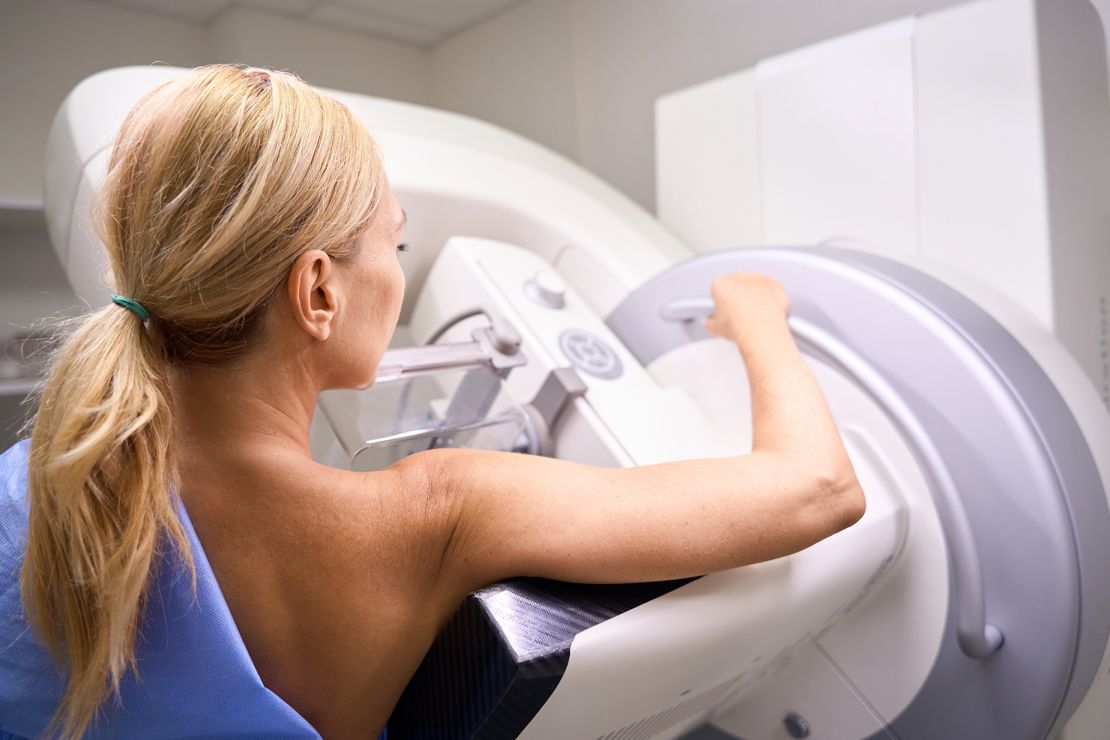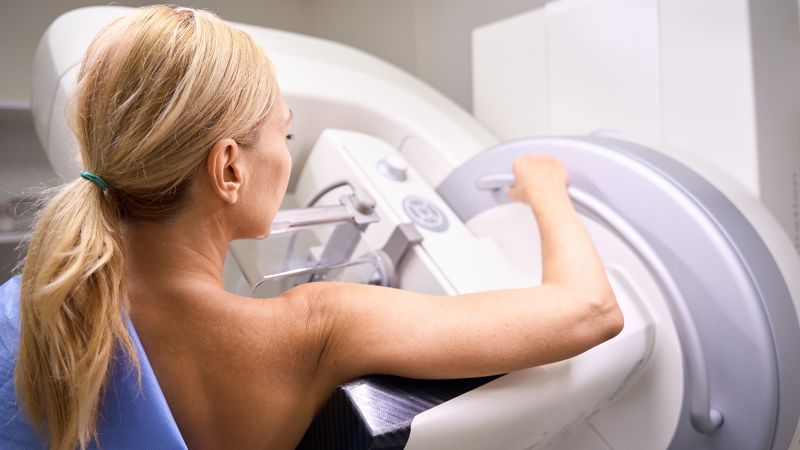CNN
—
An influential group of medical experts, the US Preventive Services Task Force, recommended last week that most women receive a mammogram starting at age 40. Women should continue to get a mammogram every other year to screen for breast cancer until age 74, the task force said.
This is a marked difference from the task force’s previous guidance, which was to start biennial mammograms by age 50. Women in their 40s were counseled to make individual decisions together with their health care provider, but there was no explicit recommendation for them to start until they turned 50.
I wanted to learn more about why these changes were made. Who should follow this updated guidance, and are there women who need to receive screening even earlier or more often? What other tests besides a mammogram may be needed? And are there preventive measures that can be taken to reduce the risk of developing breast cancer?
To help us with these questions, I spoke with CNN wellness expert Dr. Leana Wen. Wen is an emergency physician and adjunct associate professor at George Washington University. She previously served as Baltimore’s health commissioner.
CNN: How common is breast cancer?
Dr. Leana Wen: In the United States, breast cancer is the second most common cancer in women, and it is the second leading cause of cancer death in women. According to the American Cancer Society, 1 in 8 women will be diagnosed with invasive breast cancer in their lifetimes. About 42,000 women die every year from this cancer.
It’s crucial that women know their risk factors and receive screening accordingly. Screening, by definition, is done before there are any symptoms. Screening can help detect cancers at an early stage, before it has spread, when there is the best chance for successful treatment.
CNN: Why did the US Preventive Task Force make these changes?
Wen: In recent years, there has been a disturbing trend of cancer diagnoses increasing among young people. This is the case with colon cancer as well as with breast cancer.
In fact, breast cancer is the most common cancer and the leading cause of cancer death in women ages 20 to 49. Younger women tend to have more aggressive cancers upon diagnosis compared to older women.
This is especially true for Black women. the rate of deaths from breast cancer among Black women in their 40s was 27 per 100,000 person-years, compared to 15 per 100,000 person-years among White women, according to a 2023 JAMA Network Open study.
According to a study in the journal Lancet Oncology, the mortality from breast cancer could be lowered by starting mammograms earlier, at age 40.
The US Preventive Task Force’s change now makes its recommendations closer to those of other major national organizations. The American College of Obstetricians and Gynecologists, for instance, recommends screening every one or two years starting at age 40 and continuing until at least age 75. The American Cancer Society gives women ages 40 to 44 the option to receive a mammogram every year and recommends those 44 and 55 to get them annually. (Those over 55 can switch to every other year or can continue annual mammograms.)
CNN: Who should follow this updated guidance?
Wen: I would encourage woman to be aware of this updated guidance and discuss it with their physicians. The key is that this guidance is for women at average risk of breast cancer. Those at average risk should begin mammograms by age 40.
This guidance does not apply to people with higher risk. Everyone needs to evaluate their own risk to see if they may be at elevated risk; if so, they may need additional tests and at greater frequency than these recommendations.
The updated guidance also applies to all people assigned female at birth, which includes not only cisgender women but also transgender men and nonbinary people. These individuals should also have discussions with their health care providers to evaluate their risk factors and therefore how frequently they should receive screenings.
CNN: How should people determine if they need screenings more often or earlier in their lives?
Wen: The most important factor is personal or family history of breast cancer. If someone had breast cancer themselves, they need to consult their oncologist or primary care provider to figure out what testing they need and at what frequency to monitor for cancer recurrence. The same goes for individuals who had prior radiation to the chest from other cancers.
Family history is also a key determinant of risk. A woman who has a sister, mother or other first-degree relative with breast cancer has double the average risk of breast cancer. A woman who has two first-degree relatives has five times the risk of developing breast cancer.

CNN: What should women expect at their first mammogram?
Wen: A mammogram is an x-ray of the breasts. Generally, what happens is that a technician will lead to you to a room where you take off your bra and shirt, wipe off deodorant from your armpit area that could interfere with results and change into a gown that will cover you from the waist up (you don’t need to remove your underwear, pants, or shoes). You are then led to a mammogram machine. The technician will position you so that the machine can best capture images of your breasts.
The part of the mammogram that may cause some discomfort is when the technician positions your breasts between two plastic imaging plates that apply pressure while the images are being taken. However, the discomfort is generally over within seconds. Those who are concerned about potential discomfort could consider taking Tylenol or ibuprofen an hour before the mammogram.
CNN: What other tests besides mammograms may be needed?
Wen: Someone who has a family history of breast cancer may be recommended for genetic testing. They and others at higher-than-average risk of breast cancer may need to start mammograms at an earlier age or may need them at more frequent intervals. Other tests may be used along with the mammogram. These include breast ultrasound, breast MRI, or both.
I want to mention that there are experts who advocate for additional testing to be done in women who have average risk but have dense breast tissue. Mammography remains the screening test of choice in these women, but there are instances where they need additional imaging to better look for possible masses.
The American College of Radiology, for example, recommends a breast MRI in some women at intermediate risk but who have dense breast tissue. The US Preventive Services Task Force did not make this recommendation, which has implications for insurance coverage for imaging. Someone very concerned about breast cancer risk should be sure to discuss this situation with their physician, who can help decide what is best for them based on personal and family medical history and whether it is the worth additional cost they may incur.
CNN: What about women over 74? Why are they supposed to stop screening for breast cancer?
Wen: The US Preventive Services Task Force concluded that there is insufficient evidence to recommend for or against mammography in women 75 years or older. However, other major medical societies have continued to recommend mammography in people 75 or above, especially if they are in generally good health and have long life expectancies. This, once again, is an issue to be discussed with one’s individual provider, who can take into consideration other aspects of health and the patient’s wishes.
CNN: Are there steps younger people can do to reduce their cancer risk?
Wen: Risk factors for developing breast cancer include smoking and heavy alcohol use, so quitting smoking and reducing alcohol consumption will help to reduce risk. Studies have shown that exercise can lower cancer risk in general, as well as eating more whole foods and less ultraprocessed substances.
Women should also seek care if they develop any concerning symptoms, such as a new mass or lump in the breast or armpit, redness or flaky skin on the breast, nipple discharge other than breast milk, or pain or swelling anywhere in the breast.
Sign up for CNN’s Sleep, But Better newsletter series. Our seven-part guide has helpful hints to achieve better sleep.

Rachel Carter is a health and wellness expert dedicated to helping readers lead healthier lives. With a background in nutrition, she offers evidence-based advice on fitness, nutrition, and mental well-being.







:max_bytes(150000):strip_icc()/Bad-Drinks-You-Shouldnt-Avoid-for-Weight-Loss-ed7c65a1ab9d47c882a810beda2a97f6.jpg)
